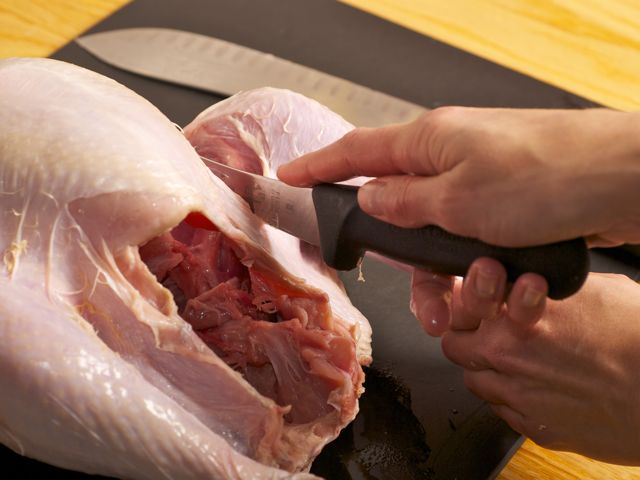
one, l
(article, Kim Carlson)
Anticipating turkeys on sale throughout the holidays, we recently asked Camas Davis — a butcher here in Portland, Oregon — to break down a small gobbler for us, with the idea that a whole bird purchased inexpensively could be cut into parts, and those parts put into the freezer to eat later in the winter. [%image camas float=left width=300 caption="Camas Davis"]Davis, the proprietor of the Portland Meat Collective — a butchery school and, soon, a meat CSA — studied traditional butchery in France. These days she's bringing her knowledge and techniques to DIY butchers in Portland and beyond. Although Davis has cut up many chickens and ducks, she had never butchered a turkey. She decided the best approach would be to quarter it. For most of the job, Davis used a common boning knife, but she used a mallet and cleaver to cut the breast halves apart. A chef's knife or even the boning knife could have done the job, she said, as long as you don't try to cut down the very center of the breast bone, the strongest part. "The main thing to remember is that most of the cuts that you need to make should be done lightly, with just the tip of your knife," she said. "That is the secret of the butcher," she added. "Most cuts are made using less than a half-inch of your knife, with a very delicate flick of the wrist." Here's how Davis quartered our turkey: |[%image zero width=300 caption="First, Davis trimmed the fat around the bird's open cavity."]|[%image one width=300 caption="With the bird breast-side up, she started to cut away the legs and thighs."]| |[%image two width=300 caption="Using just the tip of her knife, she first cut into the seam and skin between breast and thigh."]|[%image four width=300 caption="Davis then located the joint between breast and thigh, splicing through the space between the ball and socket gently but deliberately."]| |[%image five width=300 caption="To separate the thigh from the drumstick, you'd use a similar tactic of finding the joint and cutting through it. But for our purposes — a turkey mole in January — keeping the leg and thigh intact made more sense."]|[%image six width=300 caption="Next, Davis separated the backbone and ribs from the breast."]| |[%image eight width=300 caption="Placing the bird on its tail, Davis worked the knife around the back, making two main cuts on either side of the back, between the ribcage and the shoulder joints."]|[%image eleven width=300 caption="Once the two main cuts were made, Davis pressed firmly on the breast section with one hand and on the back section with another to help tear it away from the shoulder bones. She then used her knife to cut down between the last section of shoulder bone and separated the two parts completely."]| |[%image twelve width=300 caption="The final step was to separate the two parts of the breast. Davis used a cleaver and a mallet to make an initial break or score into the breast bone, just off center, where it is slightly softer. (She says she could have used a knife to do the same job.)"]|[%image thirteen width=300 caption="She finished the task with the boning knife."]| |[%image fourteen width=300 caption="Two breast halves."]|[%image fifteen width=300 caption="The resulting quarters will make two or three meals this winter."]|

one, l
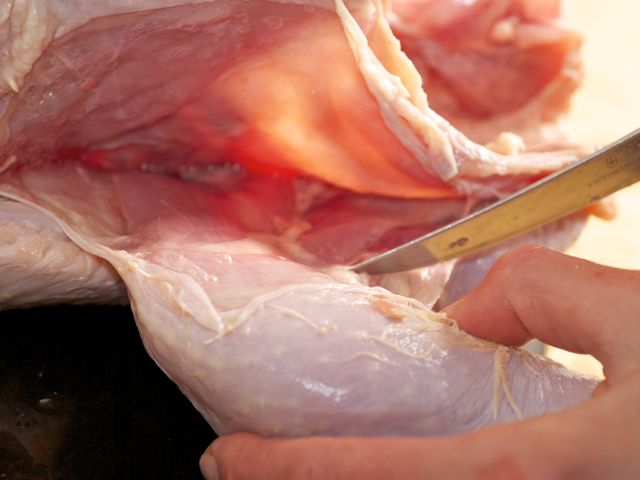
two, l
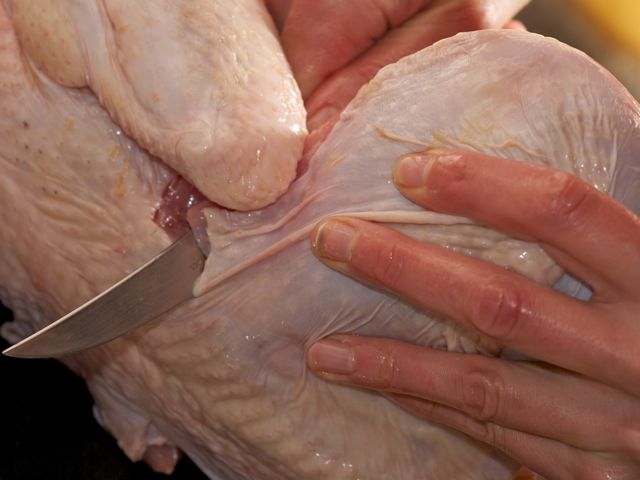
three, l
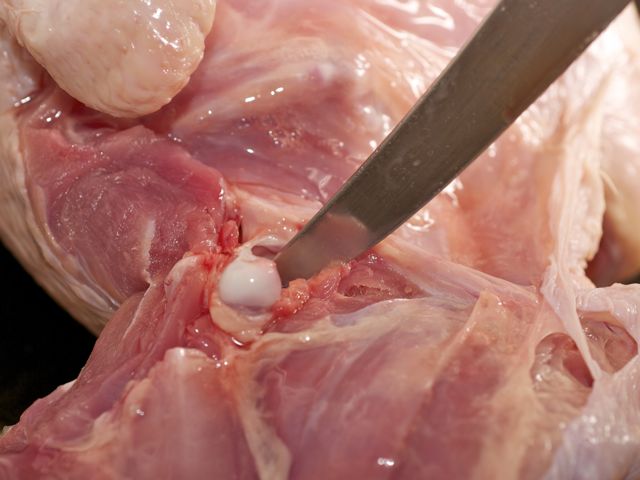
four, l

five, l
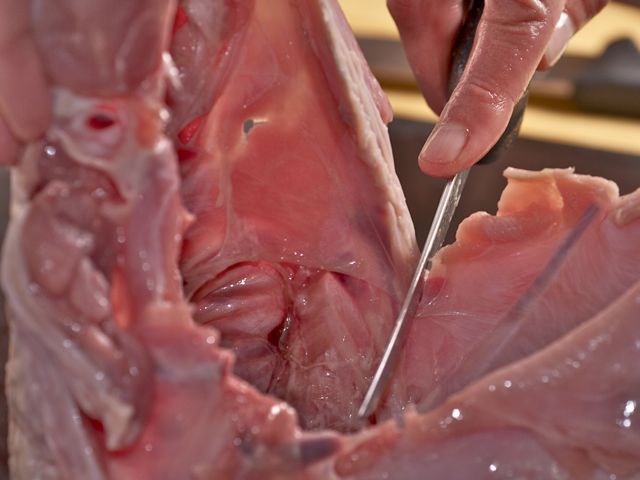
six, l
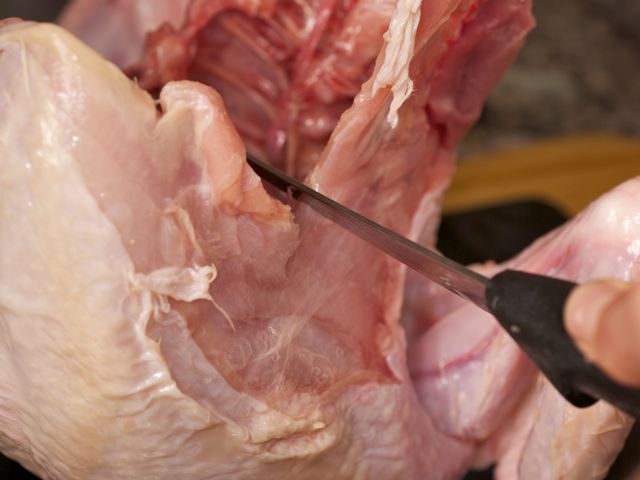
seven, l

eight, l

ten, l
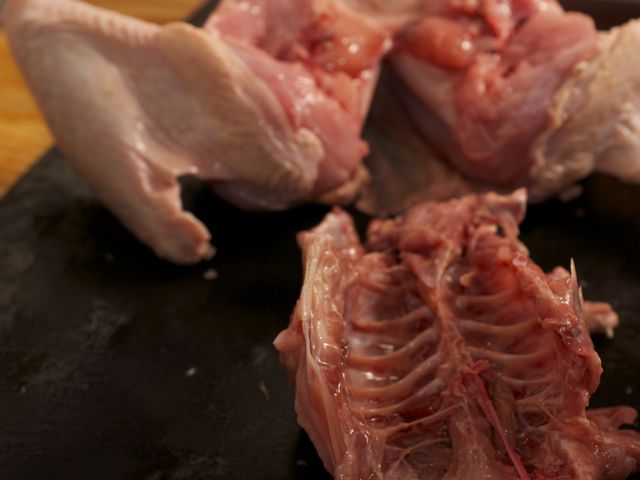
eleven, l
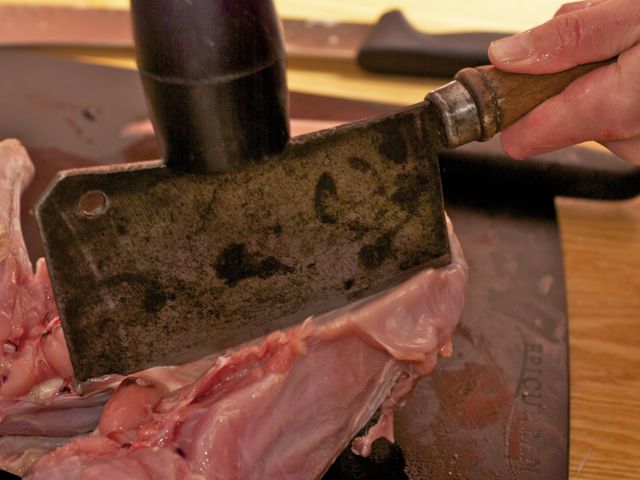
twelve, l
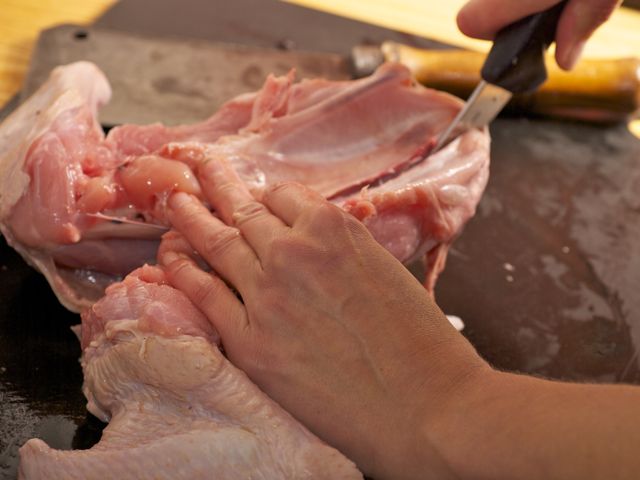
thirteen, l
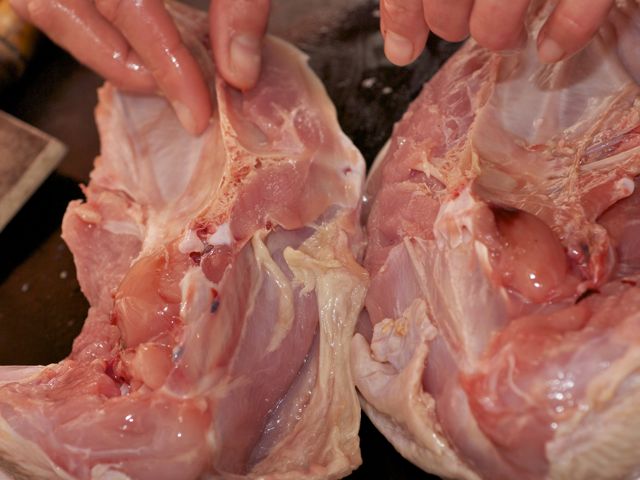
fourteen, l
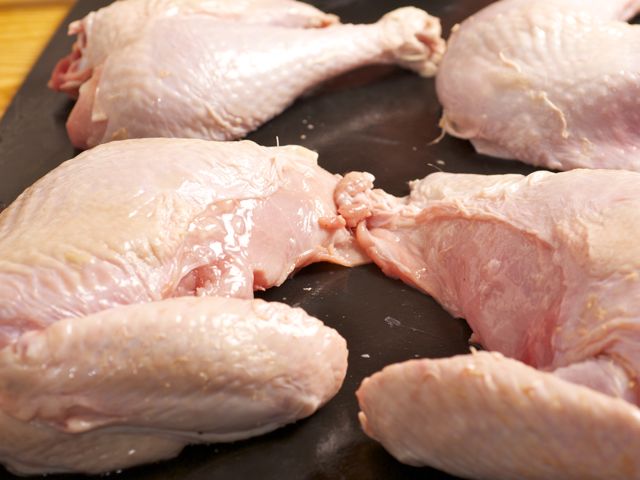
fifteen, l
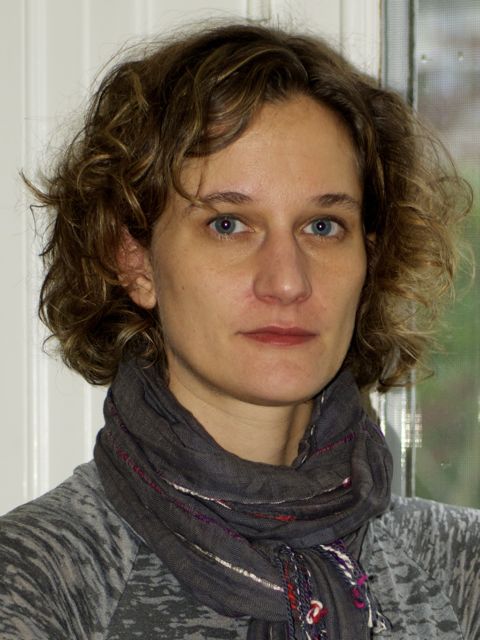
camas, l

zero, l

reference-image, l